Diwali: Indians celebrate the sparkling festival of lights
- Published

The Hindu festival of lights is one of the most important festivals in the country
Millions of Indians are celebrating Diwali, the Hindu festival of lights, which is one of the most important festivals in the country.
People pray, enjoy festive meals and light fireworks; sweets are distributed among neighbours and friends and a feeling of joy permeates the air.
However, the celebrations also spark concerns about air pollution, including in the national capital Delhi, as many people burst firecrackers despite state governments imposing curbs or banning the practice.
Delhi has seen an alarming rise in air pollution levels for the past week, and on most mornings and evenings the city has been enveloped by a thick layer of smog.
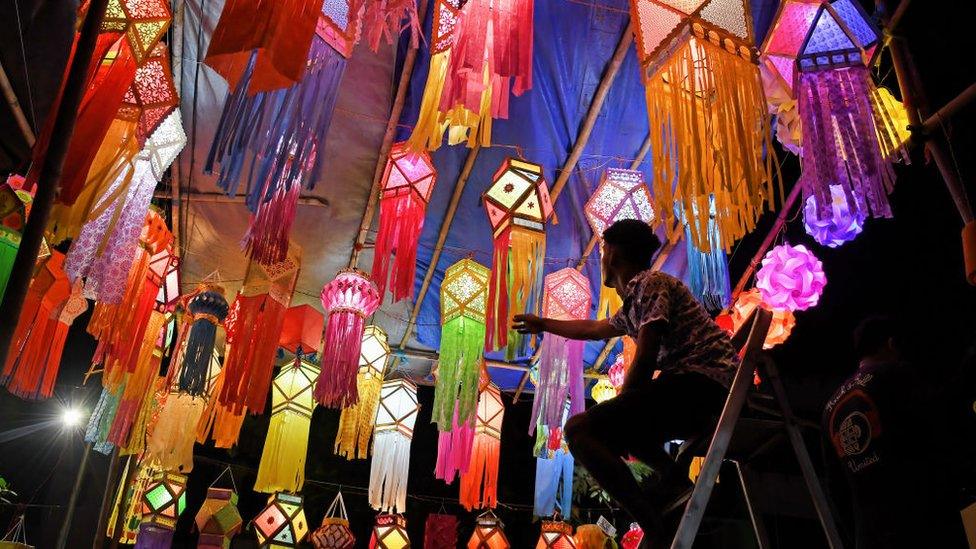
People hang lanterns outside their homes...
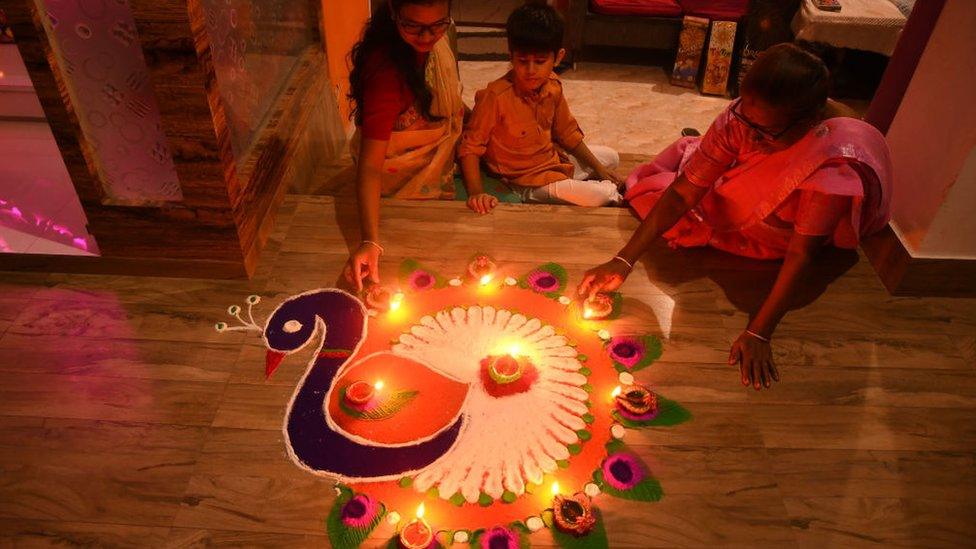
...and draw rangolis of different designs
Diwali celebrates the triumph of good over evil. People light up their homes with small oil lamps called diyas and paper lanterns to signal the victory of light over darkness and joy over sadness.
People also decorate outdoor spaces with vibrant rangolis - designs made with colourful powders - to welcome guests and to bring good luck and prosperity into their homes.
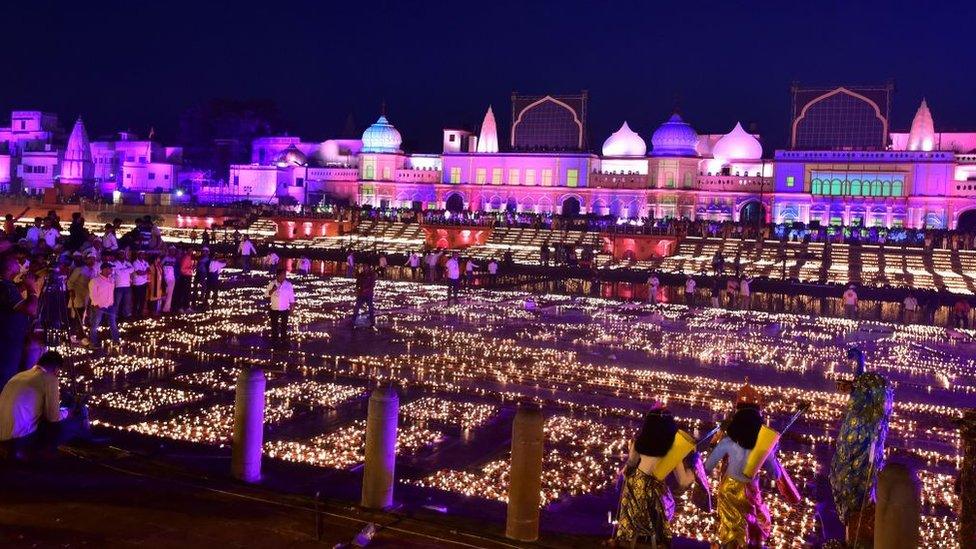
Devotees light earthen lamps on the banks of a river in the holy city of Ayodhya

The Golden Temple in Punjab state is lit up during Diwali
The exact dates of the festival change each year and are determined by the position of the Moon, but it typically falls between October and November. This year, Diwali is being celebrated on Sunday.
In the days leading up to the festival people throng shops to buy festive garments, devotional items and gifts for family and friends. People also visit relatives and often take a box of mithai - the Hindi word for sweets - with them.
Many people also light firecrackers over several days and this affects the quality of the air. In Delhi - one of the most polluted cities in the world - the air gets particularly bad during the winter months because farmers burn stubble in neighbouring Punjab and Haryana states.
The state government has banned the sale and use of firecrackers this year, but many people flout this rule.
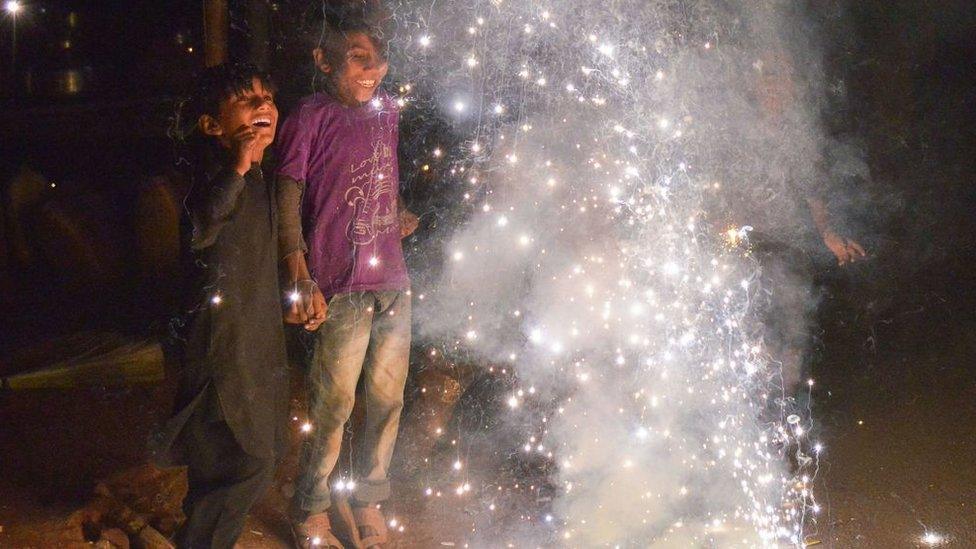
People light firecrackers, spiking up pollution levels
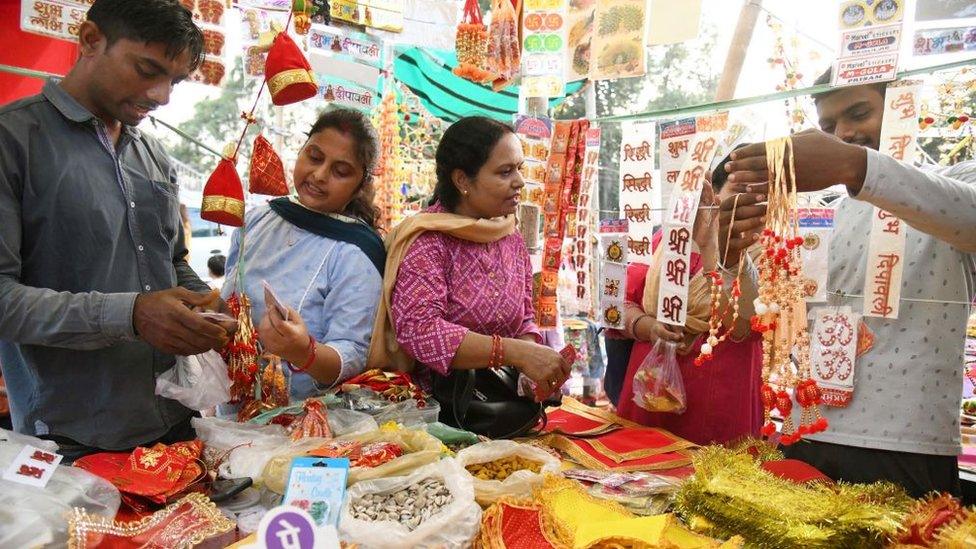
People shop for holy paraphernalia for prayer ceremonies
All images are subject to copyright
BBC News India is now on YouTube. Click here, external to subscribe and watch our documentaries, explainers and features.

Read more India stories from the BBC:
